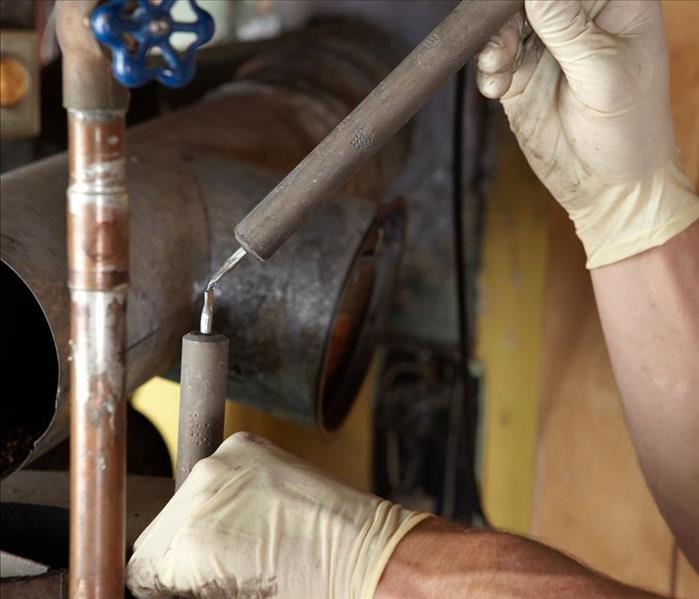Care for Your Water Heater
3/17/2022 (Permalink)
Most people think that once their new water heater is installed, that it does not require routine maintenance. But that is incorrect. There are a few things you should do to maximize your water heater’s efficiency and longevity.
Here are some maintenance tips:
1. Test the Temperature-Pressure Release (TPR) Valve
Shut off the power (or gas control) and the cold water supply valve. Place a bucket under the pipe connected to the TPR valve. Lift the valve’s tab to let some water out, then let it go. If the water keeps flowing, drain a little bit more water and install a new one.
2. Check the Anode Rod
Connect a hose to the tanks drain cock and let out a few gallons of water. Get a 1 1/16-inch socket and place it on the rod’s hex head on top of the water heater, and unscrew the rod. If its less than an ½ inch thick, or coated with calcium, it is a good time to buy a new one. If you install a new rod, make sure you apply teflon tape the threads, and securely tighten the new anode rod.
3. Flush the Tank of Sediments
As you are working on the heater and already have some of the water drained, drain the rest of the tank into a bucket. Stir up the sediment on the bottom of tank by briefly opening the cold water supply valve. Drain and repeat until clean water comes out.
4. Adjust the Temperature
When you have located the temperature dial, unscrew its cover. Adjust the dial to 120 degrees. For every 10 degrees the temperature is lowered, you can save up to 5 percent in energy costs.
If you are not going to be home for a few days, turn the water heater down or off. This will help save money as well.
5. Insulate the pipes and water heater body
Buy 3/8 – inch thick foam pipe insulation that fits the pipes. Buy enough to cover the hot and cold water pipes. Insulating the cold pipe will help with condensation during the summer time. When wrapping the water heater with an insulation blanket, do not cover the top of the unit.
Be sure to check on your water heater regularly for any rusting, calcium build up, or malfunctions. It is easy for the bottom to rust out, or one of the fittings to rust on the top of the unit and cause a water damage.




 24/7 Emergency Service
24/7 Emergency Service
